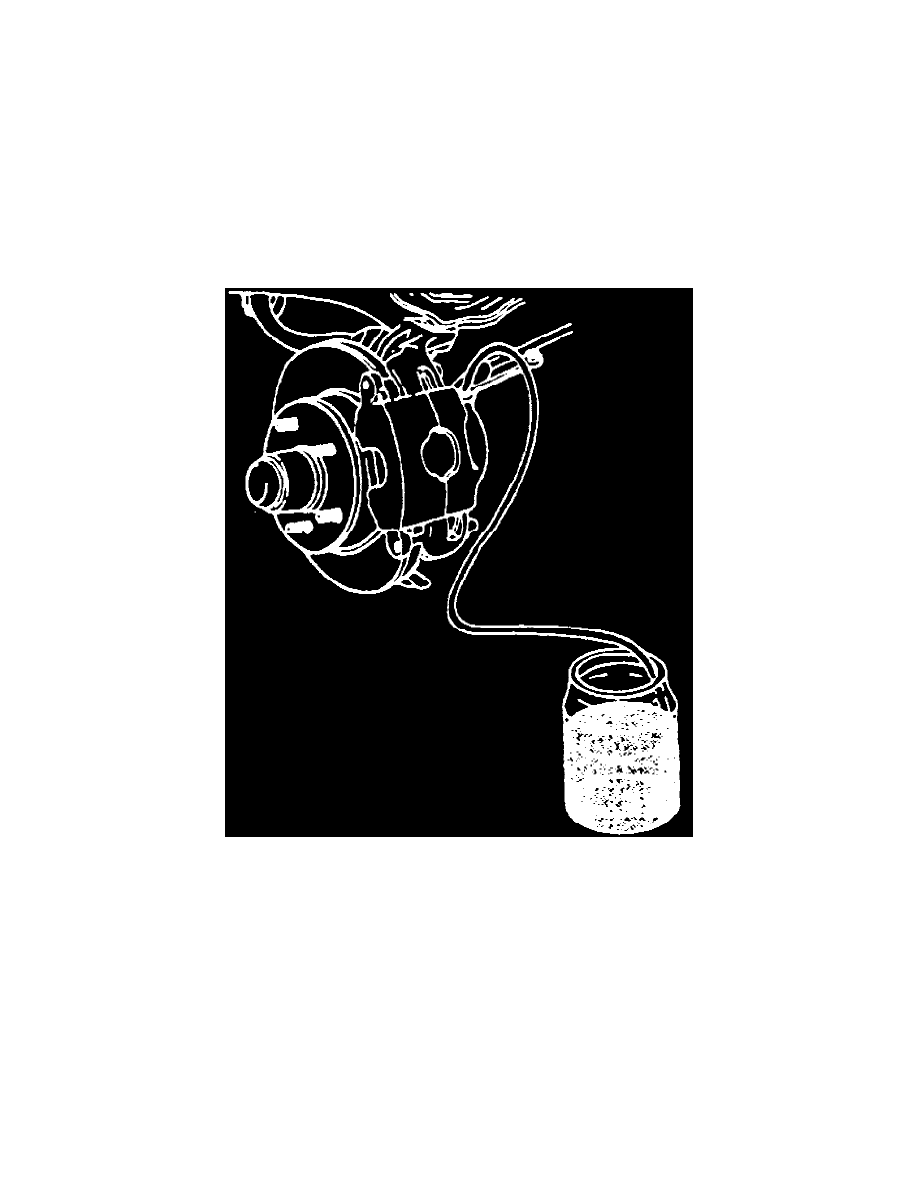Silhouette V6-191 3.1L VIN D TBI (1995)

Brake Bleeding: Service and Repair
Without ABS
General Information
The braking system can be bled manually or with pressure bleeding equipment. If bleeding manually, check fluid level frequently.
Brake fluid should never be reused. Before driving the vehicle, check brake operation to ensure a firm pedal has been obtained.
Brake fluid will damage electrical connections and painted surfaces. Use shop cloths, suitable containers, and fender covers to prevent brake
fluid from contacting these areas. Always seal and wipe off brake fluid containers to prevent spills.
Manual Bleeding
MANUAL BLEEDING
Fig. 7 Caliper Bleeding Hose Installation
1. If vehicle is equipped with a vacuum or hydraulic booster, relieve system by applying brakes several times with engine off.
2. Fill master cylinder reservoir with DOT 3 brake fluid. Maintain full level during bleeding procedures.
3. If master cylinder is replaced or suspected to have air in the bore, bleed it before calipers.
a. Attach bleeder hose to rearward bleeder valve and submerge opposite end of hose into a clean suitable container partially filled with DOT 3
brake fluid.
b. Slowly open bleeder valve 1/2 to 3/4 turn.
c. Slowly apply brake pedal to allow air to bleed from loose fitting, then tighten fitting before releasing brake pedal.
d. Wait 15 seconds, then repeat sequence, including 15 second wait, until all air has been purged from bore.
e. After all air has been removed from rear valve, repeat procedure for front bleeder valve
4. Raise and properly support vehicle.
5. Bleed each wheel in the following sequence:
a. Right rear.
b. Left rear.
c. Right front.
d. Left front.
